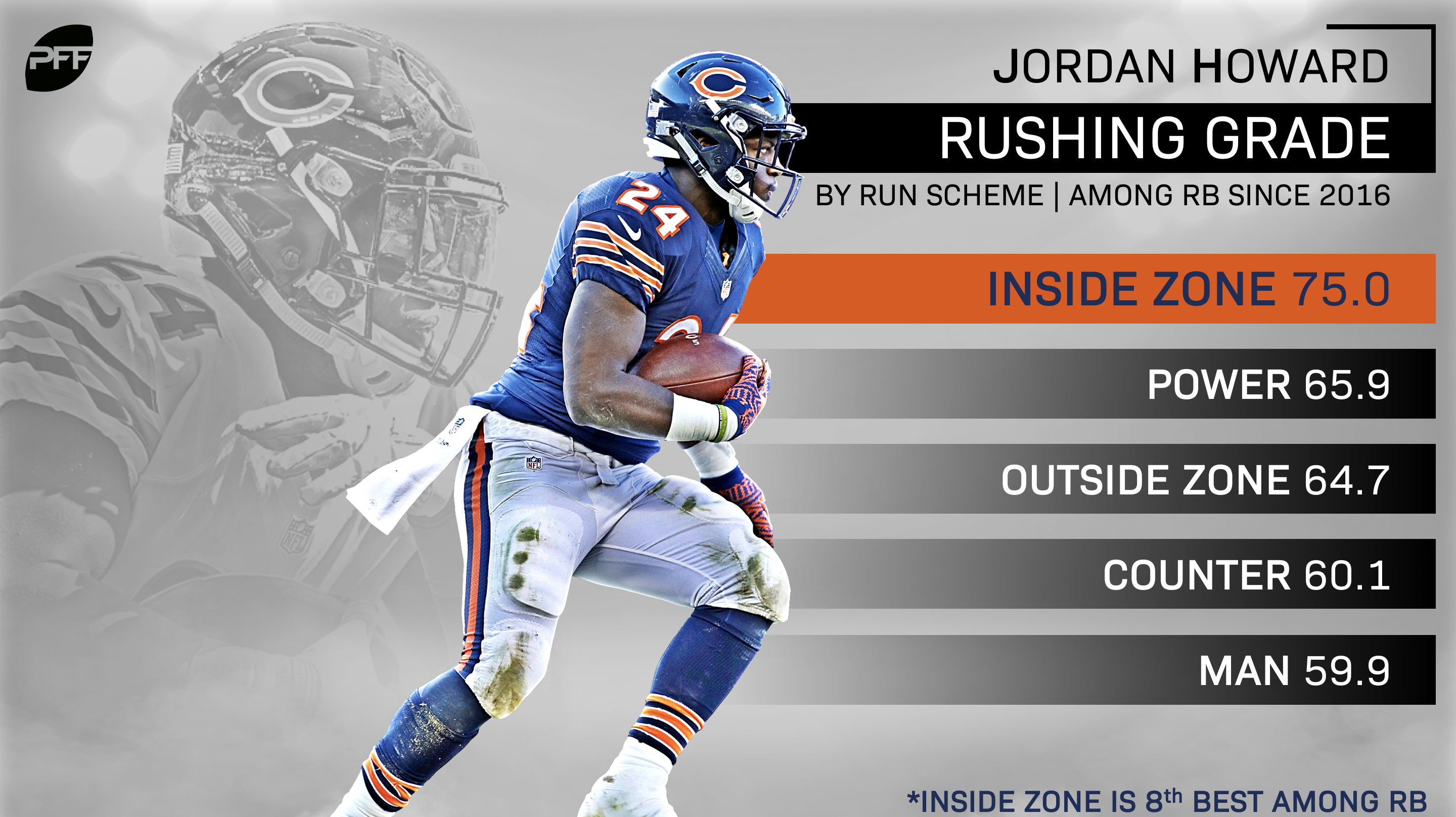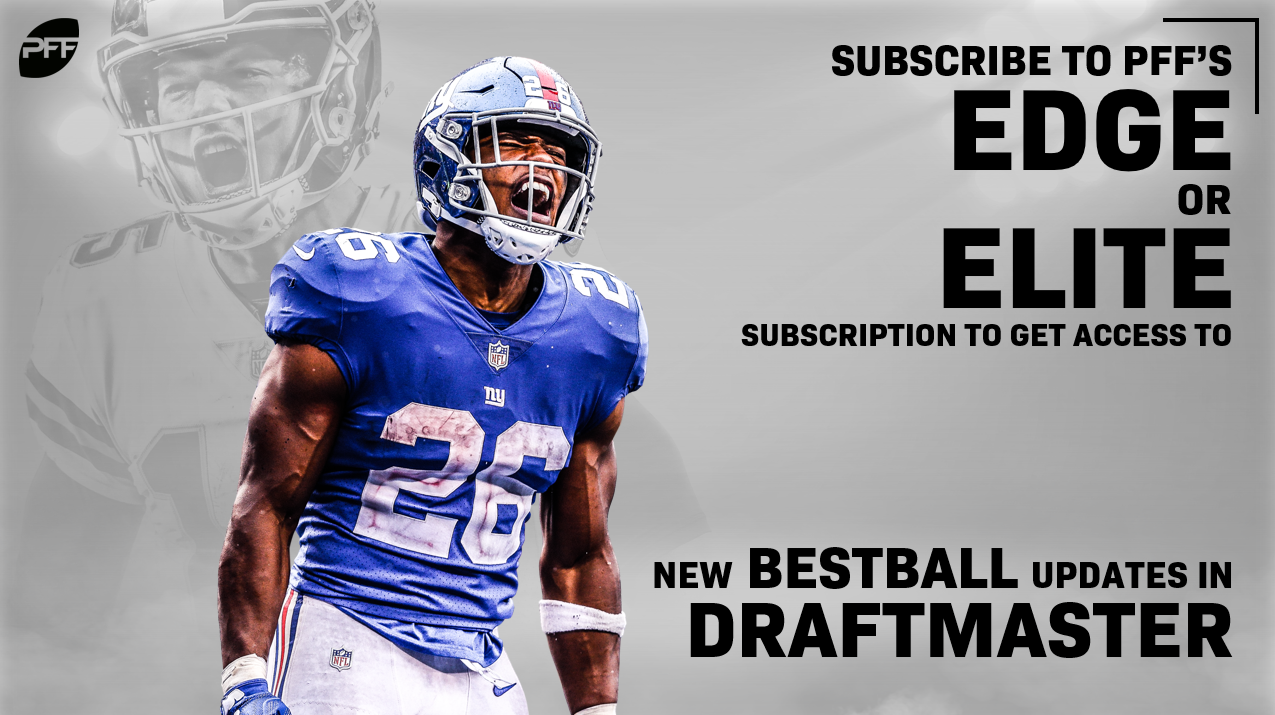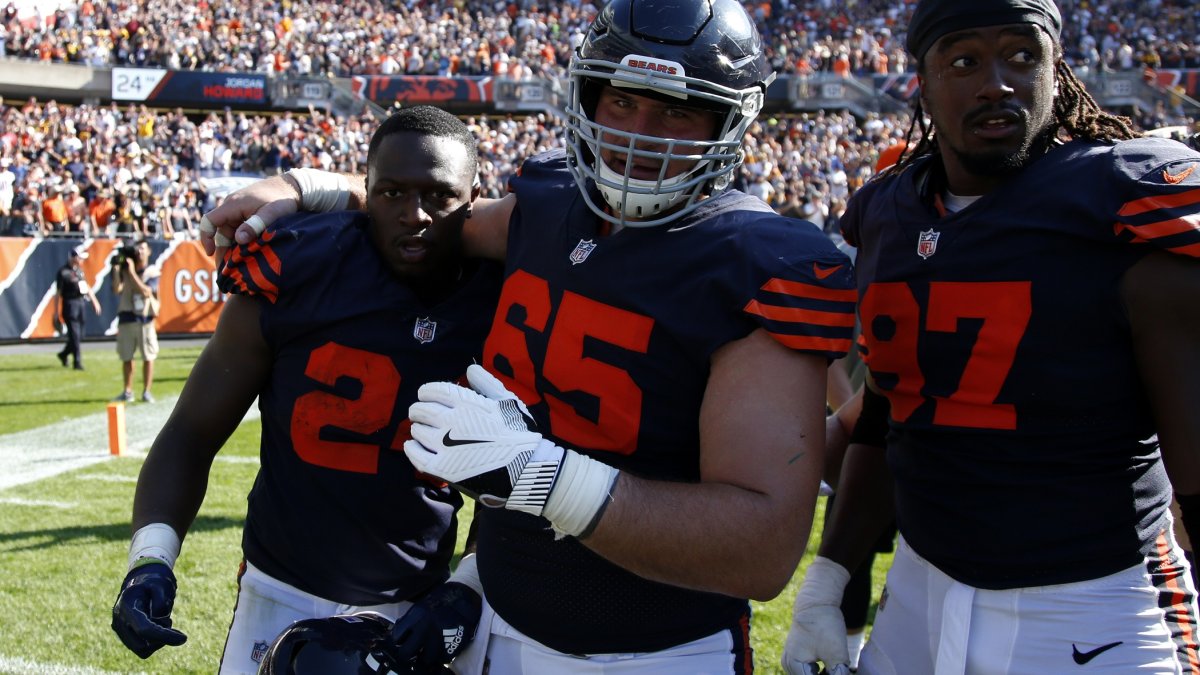(PFF Fantasy is reacting to all the offseason moves from a fantasy football perspective. Follow along here.)
Jordan Howard is heading to the City of Brotherly love after the Chicago Bears traded Howard to the Philadelphia Eagles in exchange for a 2020 sixth-round pick. While Howard ranks third in the league in rushing yards (3,426) over the last three seasons, he’s coming off a disappointing 2018 campaign where he finished 20th among running backs in fantasy scoring after being drafted on average in the mid-second round as the 13th running back off the board in fantasy drafts.
The writing was on the wall for a down season from Howard after the Bears brought in former Andy Reid assistant Matt Nagy as their new head coach. Reid-inspired offenses prioritize backs who can catch the ball, and that was not Howard’s strong suit. Over his first two seasons, Howard committed a massive 14 drops.
Additionally, the Bears most frequently used run concept in Howard’s first two seasons was outside zone at just over 37% of Chicago’s rushing attempts. Last season, the Bears ran outside zone just 14% of the time and instead leaned heavily on inside zone. Chicago ran inside zone on 44% of their running plays.

Over Howard’s career, he has 243 carries for 1,074 yards in outside zone concepts. That’s a healthy average of 4.42 yards per carry. On inside zone plays, Howard has 326 carries for 1,346 yards, or an average of 4.13 yards per carry. That isn’t a massive dropoff, but Howard has been just over 7% more efficient on outside zone runs.
In Philadelphia, Howard joins an Eagles offense that is very similar to the one he leaves in Chicago. Doug Pederson is also an Andy Reid disciple who likes to use running backs as receivers out of the backfield. The Eagles also make heavy use of inside zone concepts with a whopping 49.5% of their runs coming on inside zone plays last season.
While there’s certainly some buzz about this trade in the fantasy community, we may not want to get too carried away. Not only is Howard a poor fit in the Eagles offensive system, but he’s also unlikely to see a feature-back workload. Pederson has leaned heavily on a committee approach in his backfields, though it’s fair to argue that has been partially out of necessity. However, even early-down workhorses like Jay Ajayi and LeGarrette Blount didn’t see feature workloads.
That said, Howard is now the clear favorite to enter 2019 as the Eagles’ primary early-down back. Under Pederson, Philadelphia averages 436 rushing attempts per season. Giving Howard an optimistic share of 50% of those carries would put him at 218 carries. Howard’s career yards-per-carry mark is 4.3, but given his regression and the Eagles tendency to run inside zone, an average of 4.0 yards per carry is far more likely. That gives us 872 yards. Of course, Howard has shown the ability to score touchdowns in his career. Given his recent production, it’s fair to project Howard for just over seven touchdowns.

Of course, Howard is very unlikely to do much of anything in the passing game. Last season, he saw just 5.2% of the Bears’ targets. A similar share this season would translate to roughly 29 targets. Given Howard’s relatively low career catch rate of 67%, that means we can reasonably expect 19 catches for him. Howard’s average of 7.3 yards per catch last season puts him at 139 receiving yards. And given the fact that he’s only scored one receiving touchdown over the last three seasons, it’s tough to give him an ambitious projection. His history production has him projected at 0.25 touchdowns with this workload.
Putting that all together, we have the following 2019 fantasy football projection for Howard:
218 carries, 872 yards, 7 touchdowns
29 targets, 19 catches, 139 yards, 0.25 touchdowns
163.6 PPR points
That projected point total would have finished 27th among running backs in PPR scoring last season. That isn’t even RB2 production, which means there’s a darn good chance Howard is going to be overdrafted and end up as a fantasy disappointment. Don’t get me wrong, Howard is still a viable option in the fifth or sixth round of fantasy drafts. But at this point, it seems more likely that he comes off the board in the fourth round.
Given his expected role in the Eagles’ offense and his historic production, Howard is a low-ceiling fringe RB2 option who is likely to be a frustrating fantasy option for anyone who takes him to be their No. 2 fantasy running back.



 © 2025 PFF - all rights reserved.
© 2025 PFF - all rights reserved.